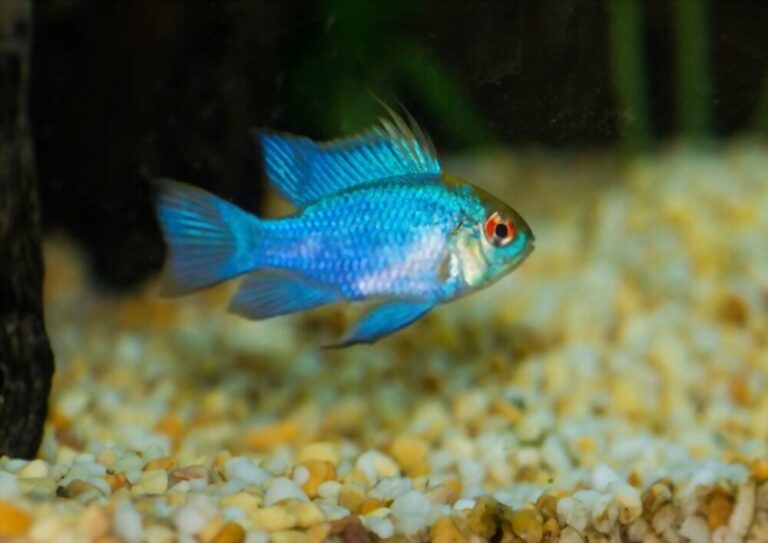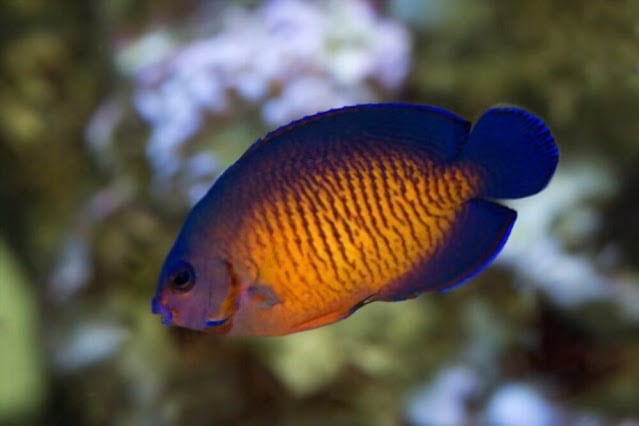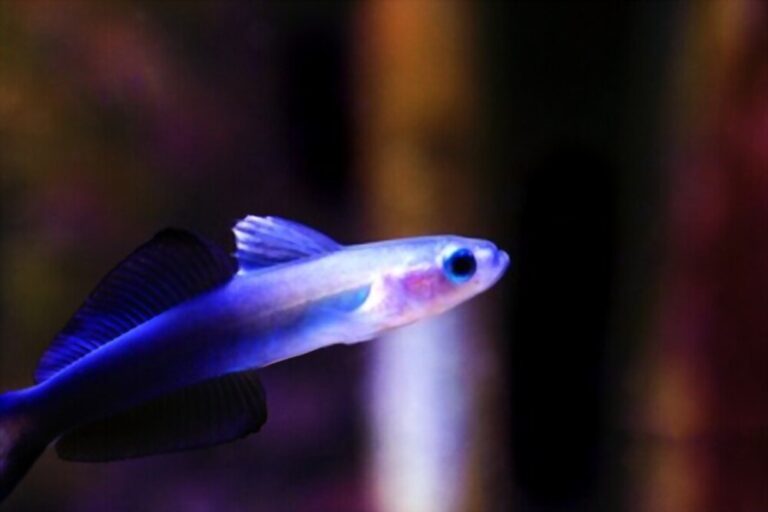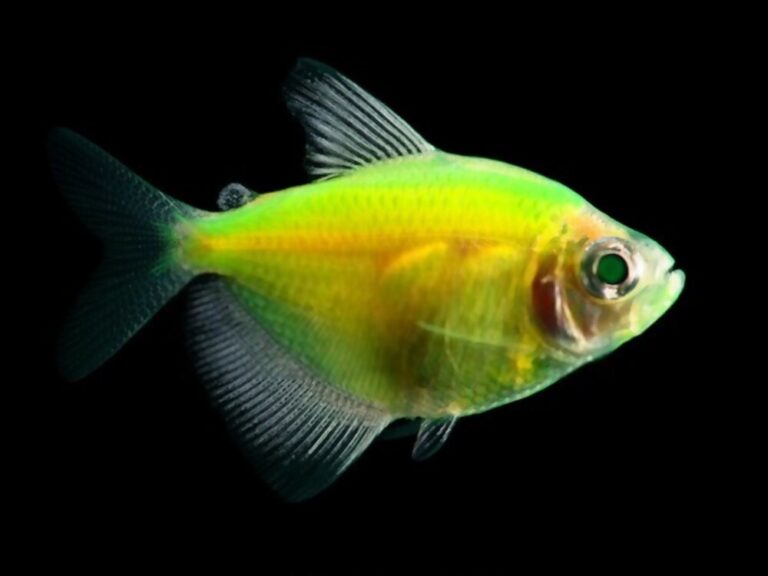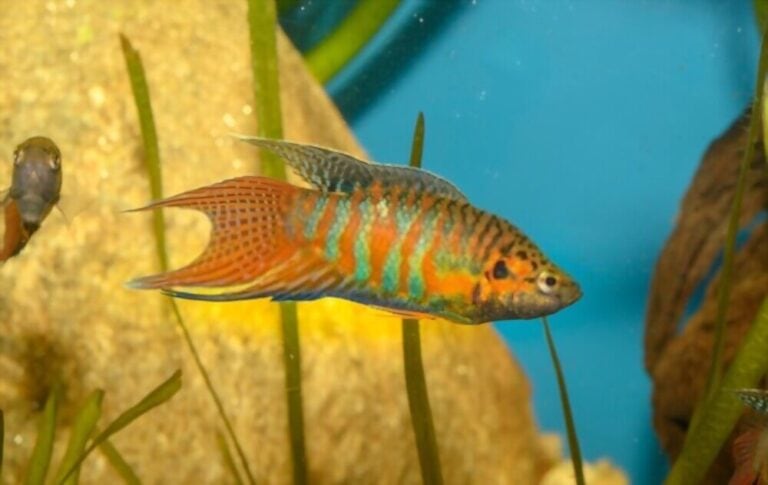Blue Hippo Tang (Care, Size, Lifespan, Diet, Habitat, Tank)
The blue hippo tang fish belongs to the genus paracanthurus and is scientifically known as Paracanthurus hepstus. They are also known by their other different names.
All of the common names are based on their various colors, markings, and their distribution in the ocean. Some other fancy fish names are regal tang, blue tang, hippo tang, surgeonfish, flagtail surgeonfish fish, etc.
They inhabit clear water of the coral reefs with strong water currents. Blue hippo tangs have higher oxygen demands, and thus they prefer to live in places with strong water movements.
They are omnivorous feeders and feed on various diets found in the reefs and marine algae and seaweed.
Blue Hippo Tang Size
They are usually sold when they are just about 1-inch long, and blue tang can gain a maximum length of 12-inches or more. While on average, they can get 9-9.6 inches of length.
They reach their maximum length at 6-7 years of age. The male blue tangs are larger than females.
Appearance
They have compressed but elongated oval-shaped bright blue bodies with thick black markings or stripes running from the mouth to the caudal fin along the upper body.
Another beautiful feature that makes them uniquely prominent is their yellow-colored tailfin in which, the yellow tinge makes a striking ‘V’ or cone-shaped appearance.
The blackish hue or stripes are not present in juveniles. But they mature the black markings sprout from a forehead right beside their head and run from mouth to the tail on the upper body.
Blue Hippo Tang Lifespan
Blue hippo tang fish is also prominent because of its long lifespan. It’s reported to live up to a maximum of 40 years in the wild. On average, their lifespan is 30 years long.
But in the aquarium, the natural conditions cannot properly be met, and if they do, they cannot be maintained for a long time. Circumstances never remain the same.
No matter how experienced the aquarium owner is, he is still a human, and anything which goes off the right way may turn out to be disastrous for the fish.
This is the reason there is a significant drop in the lifespan of this fish in captivity. It’s reported to live somewhere around 8-12 years.
This fish is not very hardy and is prone to different diseases. However, if the right conditions are maintained, you can have a few more years of this beautiful creature.
Blue Hippo Tang Behavior
Blue hippo tang fish have semi-aggressive behavior, which is triggered only when they come face to face with members of their own kind.
They establish their territories once they are acclimated to the tank, and thus they cannot tolerate other blue tangs.
Similar tangs can be kept together as juveniles as they do not bother each other. However, once they get matured, they should be separated.
Still, if you want to house them with the tangs, choose ones that look different and have different feeding priorities. Probably from a different genus.
If you add them after blue tangs have established their territories already, this will be of no use. Sometimes rearranging the aquarium and changing the arrangement of the rocks can be of great importance.
Because it’s more like putting the fish in a different setup, make sure to have a large aquarium while housing it with other tank mates.
Large aquariums have immense swimming, as well as hiding spaces that prevent your fish from getting aggressive or stressed.
Blue Hippo Tang Reef Safe
The blue tangs are completely reefed safe, and it is best to keep them in a reef tank with stony and soft coral polyps than to keep them in a simple non-reef tank since they inhabit the coral reefs in their wild habitat.
The rockwork is another necessity that must be provided in a reef tank as well.
There is another important point to be noted here in this regard that if your blue tang gets ill in the reef tank, you must take it out and shift to another quarantine tank for remedies. It is because the remedies used to treat the tang may be harmful to the corals.
Blue Hippo Tang Care
Caring for blue hippo fish means providing it the best possible environment with optimum aquarium conditions.
The first and most important thing to do with blue hippo tang fish is to quarantine them for about two weeks before adding them to the main tank, especially if your tank is a community tank.
For a single specimen to be added alone in a tank, quarantine is not essential. The blue tangs are very active swimmers in their natural habitat and swim steadily among the rocks.
Thus, they do the same in the tank, so providing a large amount of swimming space is an essential part of caring for blue tang fish.
As noted previously, they are not hardy, which means they are susceptible to different diseases.
Therefore proper cleaning of aquarium water by filtration through a filter and water replacement are necessary things to be done.
For a single specimen housed in a medium-sized gallon, 20% water changes are recommended every month, and 30% for a large tank.
Blue Hippo Tang Diet
They mostly feed on planktons in the wild, but they are also seen feeding on the live rocks’ algae. Therefore they are regarded as an omnivorous type of feeder.
The zooplanktons account for a significant portion of their diet in the wild. Rarely, they feed directly on algae. Rather they feed on zooplankton, which feed on algae and phytoplankton.
This way, the nutrition cycle is completed, and they get essential nutrients from zooplanktons, which were once part of algae. The foods that they should be fed in the aquarium are listed below.
- Meaty diet: In the aquarium, they would readily accept the finely sliced frozen meat and live foods such as Mysis shrimps, brine shrimps.
- Pellets/Tablets: To maintain a high-quality, balanced, and nutritious diet. The prepared foods such as pellets or tablets bathed in Vitamin C should be fed to the fish regularly.
- Algae: The marine algae is highly nutritious and would fulfill its vegetarian requirements.
- Flake food: The flake foods soaked with vitamin C would also do great with blue tangs.
The need for vitamin C is because Vitamin C enriched foods provide them with immunity against Head diseases.
Blue Hippo Tang Tank Size
As noted previously, the blue tangs are active swimmers. They continuously swim and nibble over the corals’ surface in the wild, searching for their favorite food.
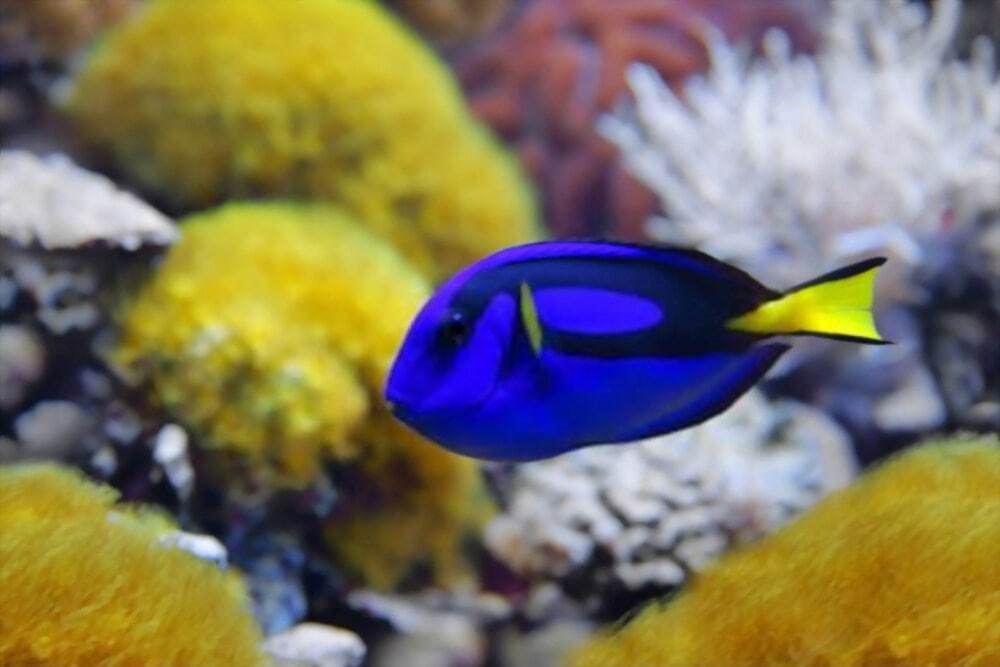
Moreover, they can reach up to 12 inches long. Therefore, while captivating them, one should keep in mind that a large tank is one of the important needs.
The blue tangs are often sold as 1 inch long juveniles. So, at this point, they can be kept in nano-tanks.
They reach their average adult length by five years of age. When they are 2-5 inches long, they should be kept in a tank size 75-gallon minimum.
A 125-gallon tank would be best for a 5-8 inch long blue tang. The average length gained by this fish is 9.6 inches.
Thus, at this point in their life, a 180-gallon tank would be considered minimally suitable. So, for an adult blue tang to be kept in a community tank, a tank size of more than 200 gallons would be suitable.
Can I Put A Blue Tang In A 30 gallons?
Practically it is not possible to grow a blue tang in a 30-gallon tank. They are one of the most active fishes in the ocean, and they do more activities in a tank.
Their size is also one factor that will create problems for blue tangs to live in the 30-gallon tank. You can keep juvenile blue tang in a 30-gallon tank but only for a few months and not for even one year.
Tank Setup
The tank setup for blue tangs has already been discussed previously in patches. Let’s wrap it all up. Being juveniles, the tangs are in a growth phase, and their instincts are getting developed.
You must provide them with many live rock formations where they can sleep at night and hide in on feeling any threat or stress. The same is for adults. Crevices are an important part of their habitat.
They are reef inhabitants. So, they don’t have any specifications regarding substrates. Any substrate can be used, but rounded pebbles are preferred. Make sure that rocks are firmly glued on the substrate as vigorous fish movements can ace them up.
The filtration setup for all three types of aquarium filtration is a necessary component of the setup. The filters are also responsible for producing strong water currents, which are essential as this fish has high oxygen demand, which can be met in powerful water currents.
Being a tropical fish, it requires a temperature range of 22.2 to 25.6 degrees Celsius. For this purpose, use thermostatic equipment that maintains the temperature within the optimal range.
Other requirements such as pH and water hardness should be 8.1-8.4 and 1.023-1.025, respectively.
Last Words
Blue hippo tang is a tropical marine fish and found in the vastness of the Indo-pacific ocean.
It has a wide distribution in the Indo-pacific ocean, where it is hugely distributed from Africa’s Eastern coral islands to Japan and further towards the great barrier reef and the Samoan Islands.
It is a magnificent fish that is very popular among aquarists looking for some extraordinary eye-catching fish for their saltwater aquarium.
Even though it’s not an easy fish to take care of, its brilliance attracts the aquarists. It is not recommended for beginners to acquire this fish. Experts or aquarium owners who have some experience dealing with saltwater fishes are advised to purchase this fish.
FAQs
Why blue hippo tang is not eating? (Reasons & Solution)
If your blue hippo tang is declining the food, that means your fish is wasting away bit by bit. And you really need to do something before it is too late.
There is an important thing to be noted in this situation that is usually ignored by the number of tank mates. A crowded tank is more likely to stress your tang, and a stressed tang is very much likely to avoid food.
So, maintain a good and stable tank with a suitable number of tankmates to avoid stress-related problems. You also need to review what you are feeding them.
Most people have the misconception that the blue tang is a big veggie eater, and they start giving it different kinds of vegs from their table, which is totally disastrous for your fish.
The only veggie that they love to eat is nutritious marine algae. Avoid giving them other vegetable scraps or lettuce.
Please give them a properly balanced diet, including meaty fairs, supplemented with algae and nori. Moreover, a water change is a significant thing you have to follow, and it is directly related to how your fish would behave in the tank.
Are blue hippo tangs hard to keep?
Keeping blue hippo tangs is not hard if you are a beginner or want to keep this fish in your aquarium. All you need is the proper caring for blue hippo tangs and fulfill all the requirements.
When it comes to keeping this fish in a tank, it is always recommended not to compromise with the tank size.
Because many beginners do not care about the tank size when they start to add blue hippo tang in a tank, always remember that they require large tanks and not small ones.
Are blue hippo tangs aggressive?
Blue hippo tang fish have semi-aggressive behavior, which is triggered only when they come face to face with members of their own kind.
Large aquariums have immense swimming, as well as hiding spaces that prevent your fish from getting aggressive or stressed.
What do blue hippo tangs eat?
They mostly feed on planktons in the wild, but they are also seen feeding on the live rocks’ algae. Therefore they are regarded as an omnivorous type of feeder.
Meaty foods, Algae, Flake food, and Pellets can be considered the best foods your blue hippo tangs require in the aquarium.
How do you care for a blue tang?
Caring for blue hippo tang fish means providing it the best possible environment with optimum aquarium conditions. Providing them a friendly environment with well-maintenance and time to time food is all thing that you require for caring blue tangs.
What is the lifespan of a blue tang?
Blue hippo tang fish is also prominent because of its long lifespan. It’s reported to live up to a maximum of 40 years in the wild. On average, their lifespan is 30 years long.
What size tank do you need for a blue tang?
The blue tangs are often sold as 1 inch long juveniles. So at this point, they can be kept in nano-tanks.
They reach their average adult length by five years of age. When they are 2-5 inches long, they should be kept in a tank size 75-gallon minimum.
How big does a blue hippo tang get?
Blue tang can gain a maximum length of 12-inches or more. While on average, they can get 9-9.6 inches of length.
